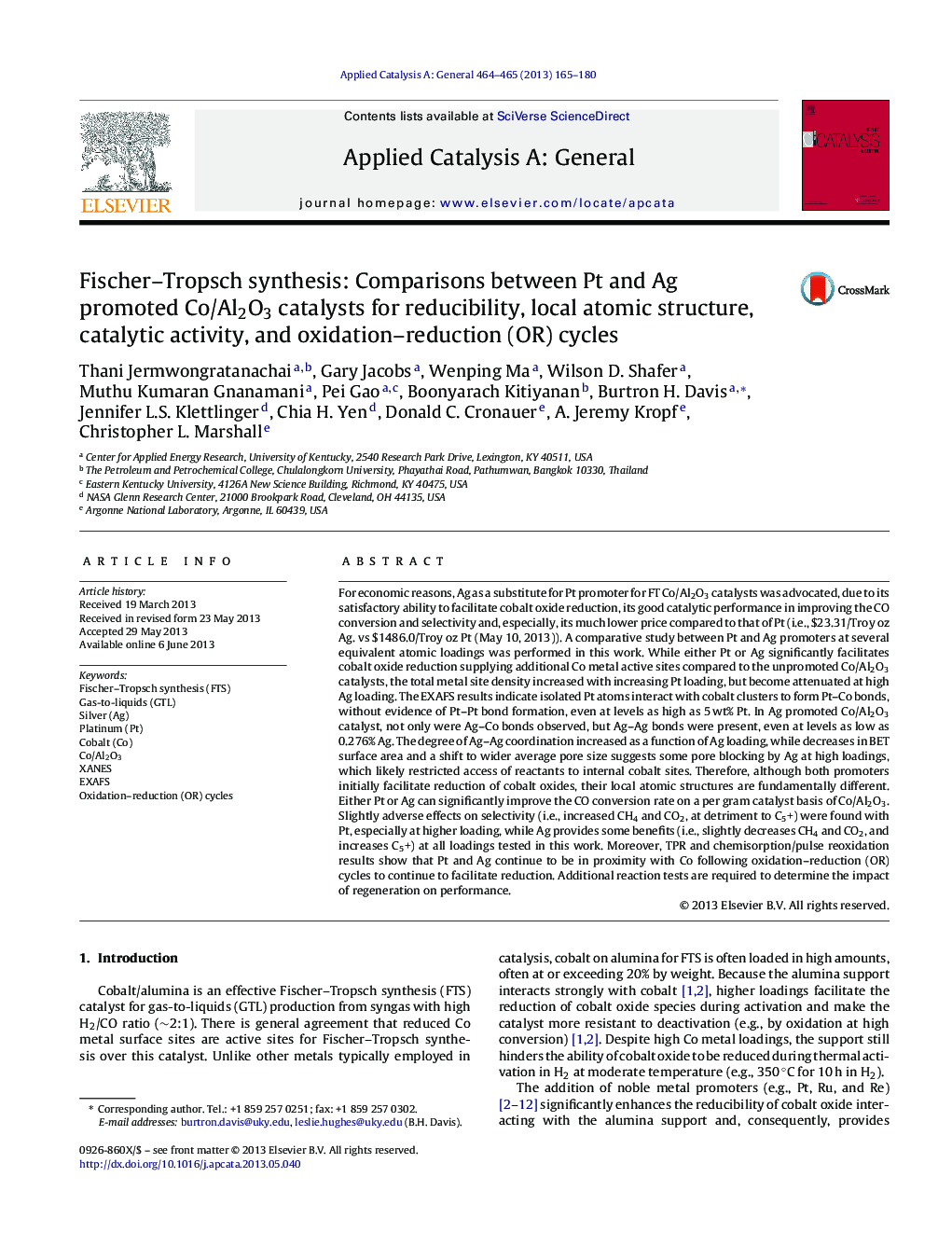| کد مقاله | کد نشریه | سال انتشار | مقاله انگلیسی | نسخه تمام متن |
|---|---|---|---|---|
| 40119 | 45844 | 2013 | 16 صفحه PDF | دانلود رایگان |

• Ag metal is currently ∼2% of the price of Pt; both facilitate Co oxide reduction.
• Pt coordination with Co at the atomic level, even up to 5% by weight.
• Ag coordinates with Co and Ag, with increasing Ag–Ag coordination with loading.
• Ag addition slightly improves selectivity (all loadings); increasing Pt worsens it.
• Ag/Pt facilitates Co oxide reduction even after ROR; effect on reactivity unknown.
For economic reasons, Ag as a substitute for Pt promoter for FT Co/Al2O3 catalysts was advocated, due to its satisfactory ability to facilitate cobalt oxide reduction, its good catalytic performance in improving the CO conversion and selectivity and, especially, its much lower price compared to that of Pt (i.e., $23.31/Troy oz Ag. vs $1486.0/Troy oz Pt (May 10, 2013)). A comparative study between Pt and Ag promoters at several equivalent atomic loadings was performed in this work. While either Pt or Ag significantly facilitates cobalt oxide reduction supplying additional Co metal active sites compared to the unpromoted Co/Al2O3 catalysts, the total metal site density increased with increasing Pt loading, but become attenuated at high Ag loading. The EXAFS results indicate isolated Pt atoms interact with cobalt clusters to form Pt–Co bonds, without evidence of Pt–Pt bond formation, even at levels as high as 5 wt% Pt. In Ag promoted Co/Al2O3 catalyst, not only were Ag–Co bonds observed, but Ag–Ag bonds were present, even at levels as low as 0.276% Ag. The degree of Ag–Ag coordination increased as a function of Ag loading, while decreases in BET surface area and a shift to wider average pore size suggests some pore blocking by Ag at high loadings, which likely restricted access of reactants to internal cobalt sites. Therefore, although both promoters initially facilitate reduction of cobalt oxides, their local atomic structures are fundamentally different. Either Pt or Ag can significantly improve the CO conversion rate on a per gram catalyst basis of Co/Al2O3. Slightly adverse effects on selectivity (i.e., increased CH4 and CO2, at detriment to C5+) were found with Pt, especially at higher loading, while Ag provides some benefits (i.e., slightly decreases CH4 and CO2, and increases C5+) at all loadings tested in this work. Moreover, TPR and chemisorption/pulse reoxidation results show that Pt and Ag continue to be in proximity with Co following oxidation–reduction (OR) cycles to continue to facilitate reduction. Additional reaction tests are required to determine the impact of regeneration on performance.
Figure optionsDownload high-quality image (177 K)Download as PowerPoint slide
Journal: Applied Catalysis A: General - Volumes 464–465, 15 August 2013, Pages 165–180